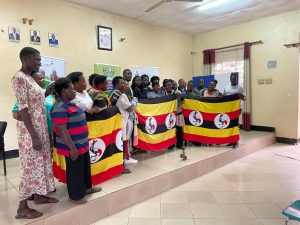INTRODUCTION
Uganda, often referred to as the “Pearl of Africa,” boasts a rich and diverse agricultural landscape. Crop farming is a cornerstone of the country’s economy, providing livelihoods for millions of Ugandans and playing a vital role in food security and export earnings. This article explores the various aspects of crop farming in Uganda, highlighting its significance, challenges, and the innovative practices that are transforming the sector.
The Importance of Crop Farming
Agriculture is the backbone of Uganda’s economy, contributing about 25% to the Gross Domestic Product (GDP) and employing approximately 70% of the population. Crop farming, in particular, is crucial as it underpins the country’s food security and supplies raw materials for agro-based industries. The primary crops grown in Uganda can be categorized into staple crops and cash crops, each serving different but essential roles.
CATEGORIES OF UGANDA’S CROPS PLUS IMPACTS.
Staple Crops: The Foundation of Food Security
Staple crops form the dietary foundation for most Ugandans. Key staples include:
- Maize: A versatile crop used for food and animal feed, maize is grown across the country.
- Bananas (Matoke): A staple food, especially in central and western Uganda, bananas are integral to local diets.
- Cassava: Known for its drought resistance, cassava is a critical food security crop.
- Sweet Potatoes and Yams: These are popular for their nutritional value and adaptability to various soils.
- Millet and Sorghum: Traditional grains that are resilient to harsh conditions and valued for their nutritional benefits.
Cash Crops: Boosting Export Earnings
Cash crops are vital for Uganda’s export earnings and economic development. Major cash crops include:
- Coffee: Uganda is one of the largest coffee producers in Africa, with coffee being the top export earner.
- Tea: Cultivated mainly in the highland areas, tea is another significant export commodity.
- Cotton: Historically important, cotton continues to be a valuable crop for the textile industry.
- Tobacco: Cultivated in specific regions, tobacco contributes to export revenues.
- Sugarcane: A key raw material for the sugar industry, sugarcane farming supports both domestic consumption and exports.
Horticulture: Expanding the Agricultural Horizon
Uganda’s horticulture sector is growing rapidly, driven by both domestic demand and export opportunities. Key horticultural products include:
- Fruits: Pineapples, mangoes, papayas, and avocados are widely grown and exported.
- Vegetables: Tomatoes, cabbages, and onions are staples in local markets and increasingly exported.
Challenges Facing Crop Farming
Despite its significance, crop farming in Uganda faces several challenges:
- Climate Change: Increasingly unpredictable weather patterns threaten crop yields and food security.
- Pests and Diseases: Crop pests and diseases, such as the fall armyworm in maize, pose serious threats.
- Land Tenure Issues: Land ownership disputes and fragmentation hinder large-scale farming.
- Access to Finance: Limited access to affordable credit restricts farmers’ ability to invest in modern farming techniques.
SOLUTIONS TO THE CHALLANGES
Innovations and Sustainable Practices
As part of the solutions to the challanges facing crop farming, the agricultural sector in Uganda is evolving with the adoption of innovative and sustainable practices aimed at increasing productivity and resilience. These include:
- Improved Seed Varieties: The use of high-yield and disease-resistant seed varieties has significantly boosted crop production.
- Irrigation: To mitigate the effects of erratic rainfall, irrigation systems are being implemented, particularly in drought-prone areas.
- Organic Farming: There is a growing trend towards organic farming, which not only meets the rising global demand for organic products but also promotes environmental sustainability.
- Agroforestry: Integrating trees into crop farming systems enhances biodiversity, improves soil health, and provides additional income sources.
Government Initiatives and Support
The Ugandan government, along with various non-governmental organizations (NGOs) and international bodies, is actively working to address these challenges of crop framing. Initiatives include:
- Extension Services: Providing farmers with training and information on best practices.
- Subsidies and Grants: Financial support to help farmers acquire inputs and equipment.
- Research and Development: Investing in agricultural research to develop resilient and high-yield crop varieties.
Conclusion
Crop farming remains a vital sector in Uganda, underpinning the economy and providing livelihoods for millions. With the adoption of innovative practices and sustainable approaches, coupled with supportive government policies, the future of crop farming in Uganda looks promising. Addressing the existing challenges and leveraging opportunities will be key to ensuring that the sector continues to thrive and contribute to the nation’s development.






